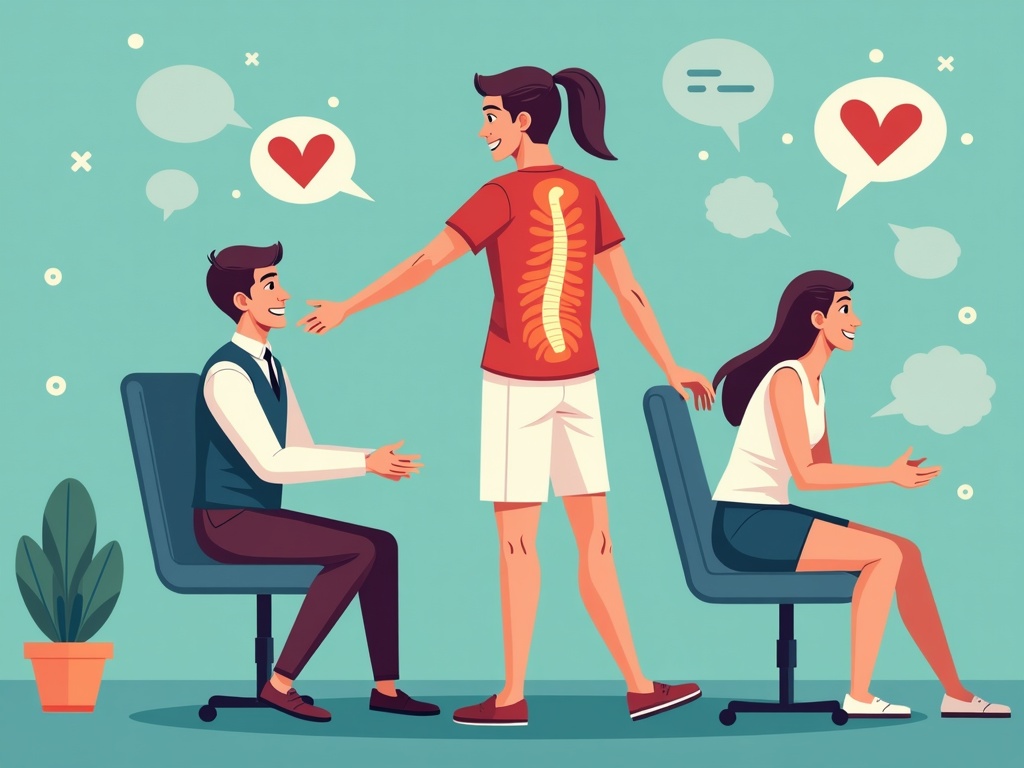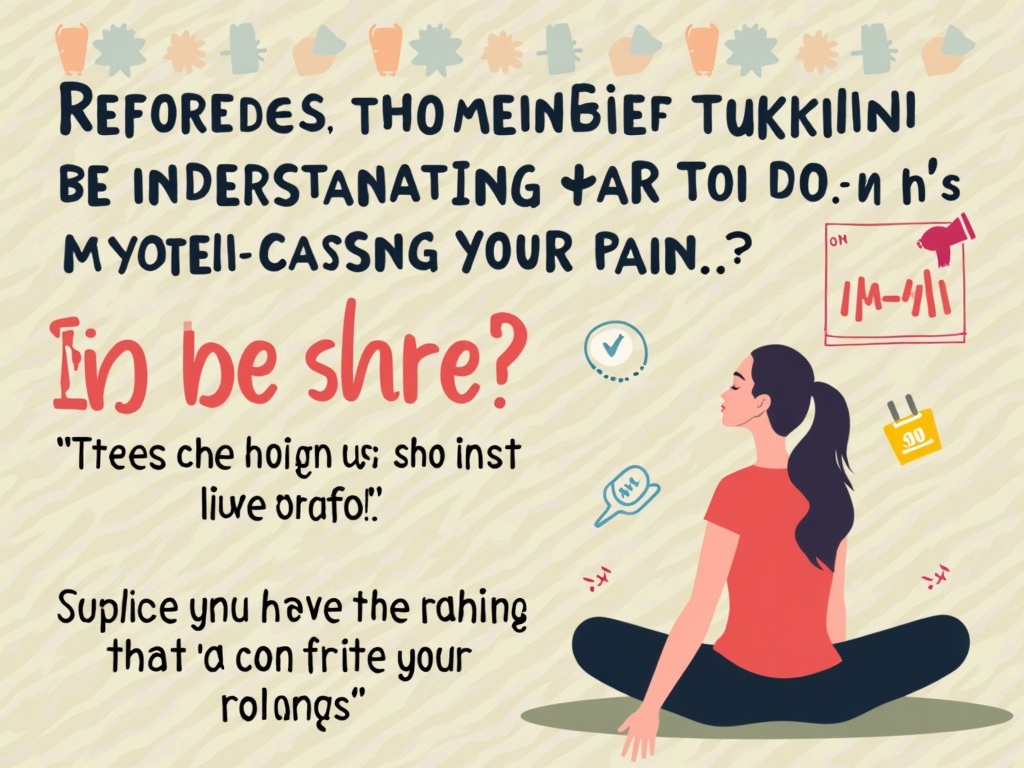What To Do For Immediate Back Pain Relief: Expert-Backed Strategies
That sudden, searing pain in your back – it can stop you in your tracks, ruin your day, and leave you desperate for solutions. Whether it’s a muscle spasm, a slipped disc, or just the accumulated stress of modern life, back pain is a universal tormentor. But before you reach for the strongest painkillers you can find, know that there are effective, fast-acting strategies you can try right now, from the comfort of your home, to alleviate that agonizing discomfort.
Understanding Your Back Pain: A Quick Assessment
Before diving into remedies, take a moment to understand what might be causing your pain. Is it a sharp, stabbing sensation after lifting something heavy? A dull ache that’s been building for weeks? Different types of pain often indicate different problems, and that impacts how you tackle it.
**Acute Pain:This is sudden, often intense pain that usually comes on after an injury. It typically resolves within a few weeks.
**Chronic Pain:This is persistent pain that lasts for three months or longer. It can be caused by underlying conditions like arthritis or spinal stenosis.
**Referred Pain:Pain that originates in another area of the body but is felt in the back. Sciatica, caused by a pinched nerve in the lower back, is a common example.
Knowing the type of pain you're experiencing offers valuable clues for treatment. However,if your pain is severe, accompanied by numbness, weakness, or bowel/bladder problems, seek immediate medical attention.
Immediate Relief Strategies: Your First Line of Defense
When back pain strikes, quick action is key. Try these remedies for swift relief:
1. The Power of Heat and Cold
This is the classic go-to for a reason. Heat and cold therapy can work wonders for soothing sore muscles and reducing inflammation.
**Ice:Apply an ice pack wrapped in a towel to the affected area for 15-20 minutes at a time, several times a day, especially in the first 24-48 hours after the pain begins. Ice helps reduce inflammation and numb the area.
**Heat:After the initial inflammation subsides, switch to heat. A warm bath, heating pad, or hot water bottle can relax tight muscles and increase blood flow, promoting healing. Be cautious not to burn yourself.
Many find alternating between heat and cold to be especially effective. Experiment to see what works best for your body.
2. Gentle Stretching and Movement
It might seem counterintuitive, but staying completely still can actually worsen back pain. Gentle stretching and movement can help loosen up tight muscles and improve circulation.
**Knee-to-Chest Stretch:Lie on your back with your knees bent and feet flat on the floor. Gently pull one knee towards your chest, holding for 15-30 seconds. Repeat on the other side.
**Pelvic Tilts:Lie on your back with your knees bent. Tighten your abdominal muscles and gently tilt your pelvis upwards, flattening your lower back against the floor. Hold for a few seconds, then release.
**Cat-Cow Stretch:Start on your hands and knees. Arch your back like a cat, tucking your chin to your chest. Then, drop your belly towards the floor, lifting your head and tailbone. Alternate between these two positions.
Remember to move slowly and gently, and stop if you feel any sharp pain.
3. Over-the-Counter Pain Relief
Over-the-counter pain relievers can provide temporary relief from back pain.
**NSAIDs (Nonsteroidal Anti-Inflammatory Drugs):Medications like ibuprofen (Advil, Motrin) and naproxen (Aleve) can reduce inflammation and pain.
**Acetaminophen (Tylenol):This medication can relieve pain, but it doesn't reduce inflammation.
Always follow the dosage instructions on the label and talk to your doctor if you have any underlying health conditions or are taking other medications.
4. Topical Creams and Gels
Topical pain relievers can be applied directly to the affected area, providing localized relief.
**Menthol-based creams:These creams provide a cooling sensation that can help to mask pain.
**Capsaicin creams:These creams contain a substance found in chili peppers that can help to reduce pain by blocking pain signals.
5. Mind-Body Techniques
Back pain can be exacerbated by stress and tension. Mind-body techniques can help you to relax and manage pain.
**Deep Breathing:Practice slow, deep breaths to calm your nervous system and reduce muscle tension.
**Meditation:Even a few minutes of meditation can help you to focus your attention and reduce pain.
**Progressive Muscle Relaxation:This technique involves tensing and releasing different muscle groups in your body, helping you to become more aware of tension and release it.
Longer-Term Strategies for Back Pain Prevention
While immediate relief is crucial, preventing future episodes of back pain is even more important. These strategies can help you keep your back healthy and pain-free:
1. Improve Your Posture
Poor posture is a major contributor to back pain. Make a conscious effort to maintain good posture throughout the day.
**Sitting:Sit upright with your shoulders relaxed and your feet flat on the floor. Use a chair with good lumbar support.
**Standing:Stand tall with your shoulders relaxed and your weight evenly distributed on both feet.
**Lifting:Bend your knees and keep your back straight when lifting heavy objects. Avoid twisting your body while lifting.
2. Strengthen Your Core Muscles
Strong core muscles provide support for your spine and help to prevent back pain.
**Plank:Hold a plank position for 30-60 seconds at a time, several times a day.
**Bridges:Lie on your back with your knees bent and feet flat on the floor. Lift your hips off the floor, squeezing your glutes.
**Abdominal Crunches:Perform abdominal crunches to strengthen your abdominal muscles.
3. Maintain a Healthy Weight
Excess weight puts extra strain on your back. Maintaining a healthy weight can help to reduce back pain.
**Eat a healthy diet:Focus on eating plenty of fruits, vegetables, and lean protein.
**Exercise regularly:Aim for at least 30 minutes of moderate-intensity exercise most days of the week.
4. Practice Proper Lifting Techniques
Lifting objects improperly is a common cause of back pain.
Keep your back straight.
Bend at your knees.
Hold the object close to your body.
Avoid twisting your body while lifting.
5. Ergonomic Adjustments
Evaluate your workspace and make ergonomic adjustments to minimize strain on your back.
**Chair:Ensure your chair provides adequate lumbar support.
**Desk:Adjust the height of your desk so that your monitor is at eye level.
**Keyboard and Mouse:Position your keyboard and mouse close to your body to avoid reaching.
When to Seek Professional Help
While most cases of back pain can be managed with self-care measures, it's important to seek professional help if:
The pain is severe or doesn't improve after a few weeks.
You experience numbness, weakness, or tingling in your legs or feet.
You have bowel or bladder problems.
You have a fever or other signs of infection.
You have a history of cancer or other serious medical conditions.
A doctor can diagnose the cause of your back pain and recommend appropriate treatment options, such as physical therapy, medication, or surgery.
The Takeaway: Empowering Yourself Against Back Pain
Back pain is a common ailment, but it doesn't have to control your life. By understanding the potential causes, employing immediate relief strategies, and adopting long-term prevention measures, you can take control of your back health and live a more comfortable, active life. Remember, listen to your body and don't hesitate to seek professional help when needed. Your back will thank you.


